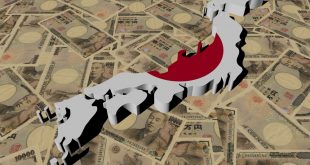The U.S. dollar fell sharply across the board on Friday, as ongoing concerns about Washington’s aggressive tariff strategy eroded confidence in the greenback’s role as a traditional safe haven. The selloff pushed the dollar to its lowest in nearly a decade against the Swiss franc and a three-year low versus the euro, capping off one of the most volatile weeks for global markets in recent years.
Dollar Weakens on China’s Tariff Retaliation
The latest blow came as China announced a steep hike in retaliatory tariffs, raising duties on U.S. goods to 125% from 84%, effective Saturday. The move intensified fears of a prolonged and destabilizing trade war, triggering further losses in stocks, bonds, and the U.S. currency.
- The Dollar Index (DXY), which tracks the dollar against six major peers, dropped as much as 1.2%, briefly falling below 100—a level last seen in July 2023.
- The index is on track for one of its worst weekly performances in years.
Safe Havens Rally: Swiss Franc and Yen Surge
Ironically, the dollar itself—once considered a premier safe haven—lost ground to other havens:
- The Swiss franc strengthened to 0.81150 per dollar, its strongest level since January 2015, extending Thursday’s 4% surge.
- The Swiss National Bank (SNB) declined to comment, though analysts warned the appreciation could fuel deflationary pressures in Switzerland.
- The Japanese yen also saw broad gains, with USD/JPY falling 1.4% to 142.37 before stabilizing slightly lower.
“The current U.S. administration seems increasingly indifferent to dollar strength,” said Vis Nayar, CIO at Eastspring Investments, citing Washington’s willingness to absorb market volatility as a trade-off for tariff leverage.
Euro, Pound Outperform on ECB Support, Dollar Weakness
The euro rallied strongly:
- Up 1.14% to $1.1360, after jumping as much as 2.5%, reaching its highest level in three years
- Also gained 0.5% against the pound, highlighting broad euro strength
The move came as ECB President Christine Lagarde reassured markets, stating the bank was prepared to use all available tools to maintain financial stability and had a “strong track record” of action during periods of market turbulence.
The British pound also advanced:
- Up 1% to $1.3093, bolstered by the broader dollar decline
Yuan Under Pressure, Euro Hits 11-Year High vs. Yuan
China’s yuan saw renewed weakness:
- The euro hit an 11-year high against the offshore yuan
- The dollar/yuan pair was last down 0.2% to 7.2965, though it had previously reached record highs earlier in the week, both onshore and offshore
The yuan remains under pressure from both external trade headwinds and internal economic softness, with the Chinese central bank likely to face mounting challenges in stabilizing the currency amid capital outflows and geopolitical uncertainty.
Bond Market Turmoil Adds to Dollar Weakness
The selloff wasn’t limited to currencies—U.S. Treasuries also came under pressure, with 10-year yields on track for their biggest weekly jump since 2001, as investors dumped dollar-denominated assets across the board.
This rare combination of rising yields and falling dollar value highlights just how deeply investor sentiment has been rattled by the unfolding trade crisis.
Outlook: Dollar Faces Sustained Headwinds
With no clear de-escalation in sight between the U.S. and China and signs of widening global dislocation, the dollar may continue to lose ground to safer alternatives like the yen, franc, and euro—especially if the Federal Reserve signals a dovish shift in the coming weeks.
All eyes are now on upcoming Fed commentary, further tariff-related developments, and how global central banks respond to rising market stress.
 Noor Trends News, Technical Analysis, Educational Tools and Recommendations
Noor Trends News, Technical Analysis, Educational Tools and Recommendations





